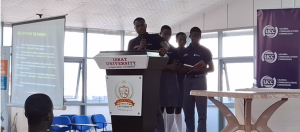Levels of AI Competency – Understand, Apply, and Create

The UNESCO AI Competency Framework explains that students should grow in their use of AI step by step. This growth is structured into three levels of mastery: Understand, Apply, and Create. Each level is important, and together they prepare learners to become responsible users, critical thinkers, and finally creators of AI tools and solutions. Let us look at each level in detail.
1) Understand: Building AI Awareness and Literacy
The “Understand” level is the foundation of AI learning. At this stage, learners are not expected to build AI models or do complex coding. Instead, they focus on developing literacy about AI—that is, learning what AI is, how it works in simple terms, and how it affects society. This means understanding both the opportunities and risks that AI brings.
Students are taught that AI is not “magic” but a set of technologies that use data, algorithms, and patterns to make decisions or predictions. They also learn about the limitations of AI: for example, AI cannot feel emotions, it can make mistakes, and it can sometimes reflect human bias.
- For example, an ICT club in Mbale can explore how Facebook or TikTok recommends videos. Students learn that behind these platforms are AI algorithms trained on massive amounts of user data, such as likes, shares, and comments. This leads to a critical discussion: Are these algorithms helping young people by showing them what they like, or are they trapping them in “echo chambers” where they only see one type of content?
Practical Club Activity: Organize a classroom debate with two sides: “AI is helping Ugandan students to learn more” versus “AI is making Ugandan students lazy.” This debate will help learners practice critical thinking, weighing the benefits and drawbacks of AI.
By the end of this stage, students should be able to explain AI in their own words, identify its uses in everyday life, and ask important questions about whether AI systems are trustworthy, ethical, or inclusive.
2) Apply: Using AI Tools Responsibly and Creatively
The “Apply” level takes learners beyond theory. Here, students start using real AI tools to solve problems in school and in their communities. The focus is not only on applying AI but also on using it responsibly, making sure that data privacy, fairness, and inclusivity are respected.
Students learn how to interact with AI systems such as chatbots, image recognition tools, translation apps, or speech-to-text programs. More importantly, they learn to apply these tools to real problems they can relate to, rather than only following foreign examples. This builds both problem-solving skills and creativity.
- For example, an ICT club in Jinja can use a free speech-to-text AI tool to record and transcribe oral histories from elders in Lusoga. This helps preserve culture while showing how AI can serve local communities. Another club in Gulu may use AI-powered weather forecasting apps to help farmers plan better planting schedules.
👉 Practical Club Activity: Students use an AI writing assistant to draft a school newsletter or announcement. After the AI generates the draft, students review and edit it themselves. This exercise teaches them that AI can assist in creating content, but the human user must always remain in control.
At the Apply stage, students begin to see AI as a tool for solving local challenges in education, farming, business, and healthcare. They also practice digital citizenship, learning to protect their own data and to avoid relying on AI blindly.
3) Create: Becoming AI Innovators and Co-Creators
The “Create” level is the most advanced stage, where learners move from being users of AI to becoming innovators and creators. At this level, students are introduced to AI development skills such as training simple models, configuring datasets, or customizing open-source AI tools. They also learn that creating AI systems carries social and ethical responsibilities—they must consider how their tools affect people, communities, and the environment.
The focus is on innovation and problem-solving. Students are encouraged to design AI systems that reflect Ugandan realities—such as supporting local languages, addressing agricultural needs, or solving community challenges. They also begin to understand how to test, improve, and optimize AI systems based on feedback.
- For example, a club in Kampala might build a simple chatbot in Luganda that helps parents check school schedules. Another in Mbarara could design a basic image recognition tool that detects maize leaf diseases and provides advice for farmers. Advanced groups can experiment with training small machine learning models to predict water usage patterns at school or track attendance.
Practical Club Activity: Organize an AI hackathon for ICT clubs. Each team selects a problem—such as waste management, student discipline tracking, or community health education—and develops a small AI solution. Teams then present their tools, explaining not only how they work but also their ethical considerations.
At the Create level, students learn that AI is not just a technology built in Silicon Valley. It is something they, too, can help design and improve. This empowers them to become part of the global community of AI creators, contributing Ugandan ideas and innovations to the wider world.
The Journey of Growth
These three levels—Understand, Apply, Create—are not separate boxes but a spiral pathway. Learners start by understanding AI, then apply it in real-life contexts, and finally move towards creating their own solutions. Along the way, they revisit earlier levels, deepening their understanding and sharpening their skills.
For ICT Clubs in Uganda, this pathway could be structured across years:
- Year 1: Focus on Understanding AI (literacy, ethics, awareness).
- Year 2: Move to Applying AI (projects in school and community).
- Year 3+: Progress to Creating AI (innovations, hackathons, and competitions).
When we follow this journey, our learners will not just become users of AI but will transform into responsible citizens and innovators, ready to shape the role of AI in our communities and in the world.






